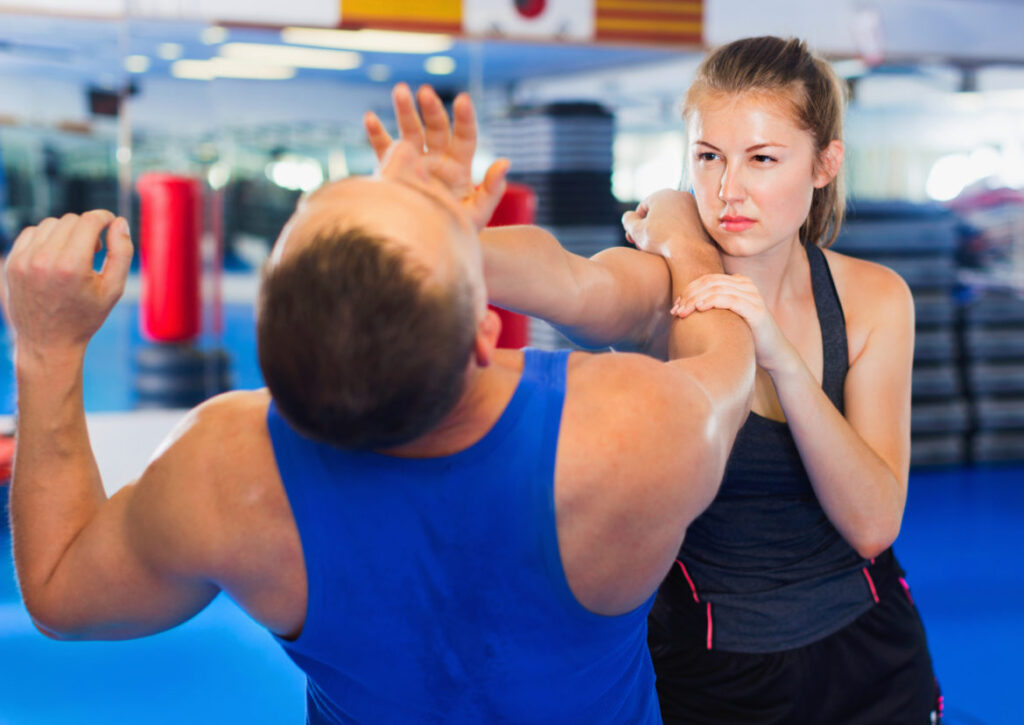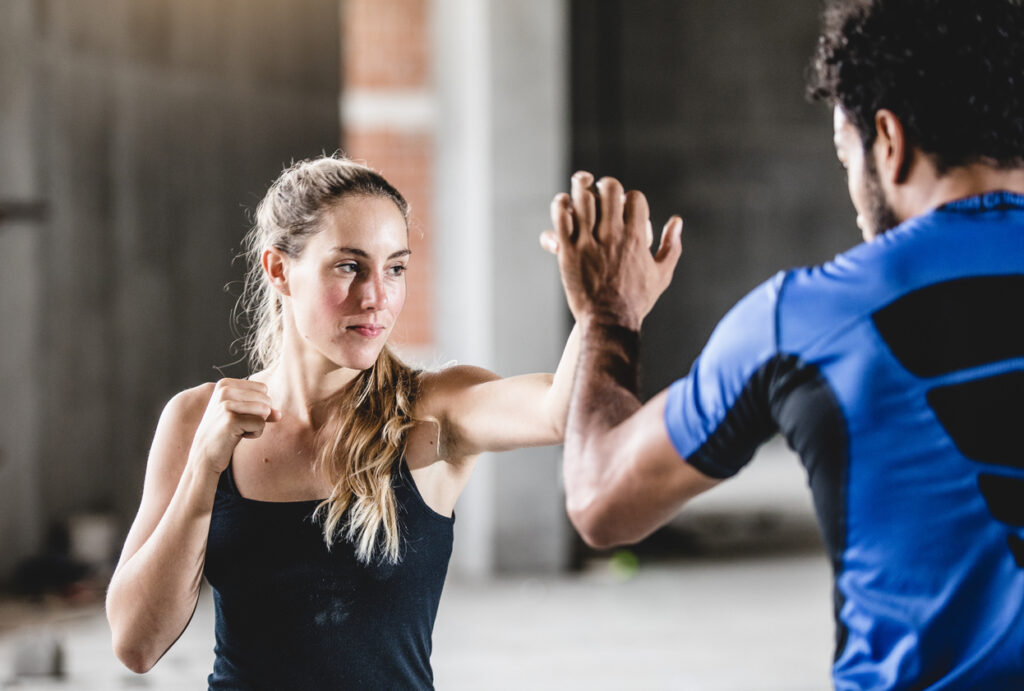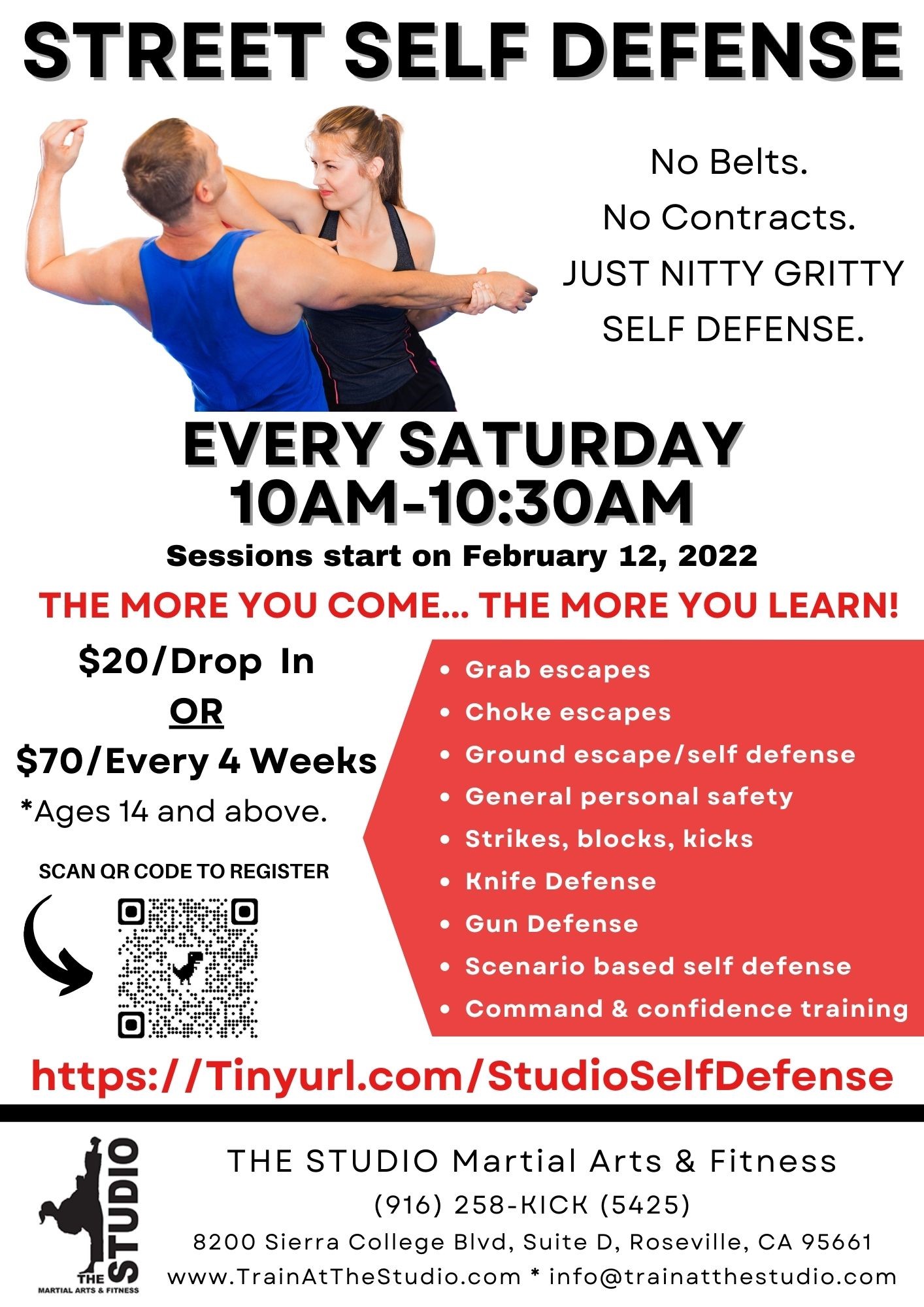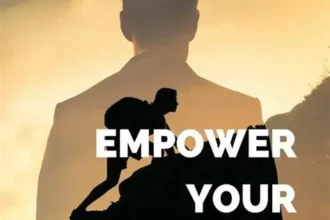By iHOXI — Updated: 2025
If you live or train in Houston and need practical Fitness Blueprint for Self-Defense readiness, this guide — Power, Endurance, Survival 2025: The Ultimate Fitness Blueprint for Self-Defense in Houston’s Toughest Streets — lays out a focused, realistic program that blends strength (power), cardiovascular conditioning (endurance), and situational survival skills so you move better, react faster, and survive smarter on the city’s toughest streets.
Why a specialized 3-pillars approach?
Self-defense is not just martial technique. It’s the overlap of three capacities:
- Power: short, explosive strength to push, strike, break grips, or drive weight past an attacker.
- Endurance: cardiovascular and muscular stamina so you can escape, chase, or sustain defensive movement without gasping.
- Survival: situational awareness, de-escalation, navigation & basic emergency care so you stay safe before, during, and after an incident.
Houston-specific context: city safety patterns and response times affect how you train and where you focus — for current HPD crime stats, monthly beat maps and community resources, see official HPD data. :contentReference[oaicite:0]{index=0}

The 12-week blueprint (overview)
Structure: 3 phases — Build, Sharpen, Harden. Train 4–5 sessions/week (mix of gym, outdoor, and skill work):
- Weeks 1–4 Build: foundational strength, mobility, and aerobic base.
- Weeks 5–8 Sharpen: explosive lifts, interval conditioning, basic combatives & situational drills.
- Weeks 9–12 Harden: stress-simulated scenarios, longer ruck/cardio sessions, first-aid practice, and outdoor survival drills.
Sample week (repeatable)
- Mon — Power: barbell/hip thrusts or trap bar deadlifts (5×3), plyo push-ups, heavy carries.
- Tue — Endurance: intervals (8 x 400m / 1:1 work-rest) + mobility cooldown.
- Wed — Skills/Survival: krav maga or combatives session + basic trauma care practice (tourniquet, pressure dressings).
- Thu — Active recovery / mobility: light swim or yoga, breathing drills.
- Fri — Mixed Simulation: partner drills, short sprint circuits, decision-making under fatigue.
- Sat — Long effort: long run/ruck or trail training (60–90 min) to simulate escape & navigation.
- Sun: rest and planning (map-check, gear check).
Training details — exercises & progressions
Power
Triple-priority: hip drive, bracing, and grip. Recommended lifts: trap-bar deadlift, loaded carries, kettlebell swings, and med-ball throws. Keep reps low (3–6) and sets high (4–6) for maximal strength/power work.
Endurance
Blend steady-state tempo runs with high-intensity intervals and “combat conditioning” circuits (bodyweight + short sprints). Hill or stair repeats are high bang-for-buck options in urban Houston settings like Memorial Park and Buffalo Bayou corridors. See Houston running and park options for routes and trails. :contentReference[oaicite:1]{index=1}
Survival & Situational Skills
Take hands-on classes: Krav Maga and reality-based self-defense schools teach practical escapes and decision-making under stress — look for established local schools (example: Krav Maga Houston and Level 6 Krav Maga). For wilderness-style survival (navigation, shelter, water procurement) consider weekend survival schools in Texas that offer intensive, skill-focused courses. :contentReference[oaicite:2]{index=2}
Where to train in Houston — recommended spots + quick maps
Below are locations that work well for the blueprint: gym/skill centers, outdoor conditioning routes, and bootcamp groups. Click each “Map” link to open the location in Google Maps.
1. Krav Maga Houston (self-defense & combatives)
Practical reality-based training, seminars, and performance classes — ideal for the weekly skill day and scenario training. :contentReference[oaicite:3]{index=3}
Map — Krav Maga Houston · Official site
2. Level 6 Krav Maga (alternate / neighborhood option)
Smaller classes, community-driven training for street defense and fitness. :contentReference[oaicite:4]{index=4}
3. Buffalo Bayou Park — runs, intervals, calisthenics stations
Long paved trails, public fitness stations and skyline routes for interval work and longer runs; great for Saturday long-effort and hill/stair repeats near downtown. :contentReference[oaicite:5]{index=5}
Map — Buffalo Bayou Park · VisitHouston trail guide
4. Memorial Park — high-quality trail & hill training
Large continuous loop, good trail options and connecting exercise trails for group runs and interval circuits. :contentReference[oaicite:6]{index=6}
5. Outdoor Bootcamp / Mean Green Training (group conditioning)
Coach-led sessions that replicate tactical conditioning and mixed modal workouts — useful for the Sharpen and Harden phases. Check community bootcamps that run in Hermann Park and other green spaces. :contentReference[oaicite:7]{index=7}
Map — Mean Green Bootcamp / Hermann Park
Gear & safety checklist
- Comfortable training shoes & layered clothing for Houston heat.
- Small first-aid kit and tourniquet for scenario drills.
- Hydration pack or water bottle (heat matters in Houston — plan accordingly).
- Phone, charged — know HPD non-emergency and local emergency numbers. For official HPD resources and local crime mapping, consult HPD’s public data pages. :contentReference[oaicite:8]{index=8}
Putting it together — sample 4-month roadmap
Month 1: establish baseline strength & run 3x/week (conservative load).
Month 2: increase power & bursts, enroll in a weekly combatives class (krav/boxing).
Month 3: simulation work — partner drills, night-time navigation walk, trauma kit practice.
Month 4: survival weekend (navigation + shelter) + a final simulated test (ruck + scenario circuit).
For wilderness-style survival courses in Texas (weekend intensives), vetted programs offer structured curriculum for shelter, water, fire, and navigation. :contentReference[oaicite:9]{index=9}
Want a personalized plan?
If you want this blueprint converted into a personalized 12-week PDF plan with Houston-specific sessions & a training calendar, contact us or visit our programs.
Internal resources: see our Self-Defense Blueprint, About iHOXI, and Contact pages for local offerings.
Sources: Houston Police Department monthly crime data; Krav Maga Houston & Level 6; Buffalo Bayou & Memorial Park trail guides; local bootcamp listings; Texas survival training providers. Check the links in the article for the most current schedules, class locations and official data. :contentReference[oaicite:10]{index=10}
Mindset as the Fourth Pillar of Urban Self-Defense
While power, endurance, and survival build the physical framework of your readiness, mindset forms the unseen yet decisive fourth pillar. In Houston’s unpredictable streets, your ability to remain calm under pressure, scan for exits, and de-escalate conflict can make the difference between walking away unharmed and escalating into violence. Developing a resilient mindset means conditioning yourself to expect stress and then practicing micro-recovery—breathing patterns, focus resets, and visualization—to prevent panic.
Urban Navigation and Environmental Awareness
Many self-defense programs stop at fighting techniques, but true survival in Houston’s streets involves reading the city itself. Urban navigation is both tactical and practical: knowing which alleys are dead ends, which blocks stay lit at night, and which transit stops are riskier during late hours. Treat every walk or run as an awareness drill: note escape routes, safe public spaces (like 24-hour stores), and potential hazards (construction zones, low visibility areas).
Technology helps but cannot replace human vigilance—battery failure or network drop can leave you stranded. Practice analog navigation by memorizing landmarks and cross streets during your routes. The more fluent you are in your city’s terrain, the fewer chances an aggressor has to corner or confuse you. Situational dominance comes not just from strength but from always having a safe path forward in your mental map.
Building Mental Resilience Under Stress
True survival training is incomplete without mental resilience. Houston’s intensity—its size, pace, and diverse environments—demands that you train your brain for unpredictability. Stress inoculation is a proven approach: expose yourself to controlled chaos in training, such as loud noise drills, timed escape challenges, or sparring while fatigued. These experiences simulate the adrenaline dump of real danger and teach your body to function despite shaking hands or racing thoughts.
Mental resilience also comes from journaling your training, recognizing improvement, and setting challenges slightly outside your comfort zone. Over time, you internalize the belief that you can endure discomfort and problem-solve under fire. This belief is itself a shield: attackers often prey on those they perceive as uncertain. A resilient posture, eye contact, and steady voice communicate readiness long before physical defense is required. In survival, perception is power, and resilience projects that power before the first move is made.
Strength Beyond the Gym: Functional Power Training
Traditional gym strength builds muscle, but functional power training ensures that strength translates to the unpredictable chaos of real-life encounters. In Houston’s streets, you won’t face neatly stacked barbells—you’ll deal with resistance in odd angles, slippery ground, or the weight of your own body under duress. Incorporating sandbags, kettlebells, ropes, and bodyweight challenges like muscle-ups creates transferable strength. The goal is not just lifting heavy but applying that strength explosively in short bursts, such as breaking free from a grab or pushing an attacker away. Functional training also conditions stabilizer muscles and joints, protecting you from injuries when environments turn hostile and uneven.
Cardio That Mimics Street Stress
Jogging alone doesn’t prepare you for the adrenaline surges of a self-defense scenario. Instead, your cardio should mimic stress patterns—short sprints, stop-and-go intervals, shuttle runs, and obstacle courses. These build anaerobic endurance, the fuel system you use when sprinting away or fighting for seconds. In Houston, you can turn city blocks, parking garages, and park trails into interval circuits. This not only boosts cardiovascular fitness but also trains your brain to recover while still moving, a skill critical when danger doesn’t pause to let you catch your breath.
Agility and Quick Footwork for Urban Defense
Many overlook footwork, yet it’s the first line of defense. Agility determines whether you can slip past an aggressor, weave through crowds, or dodge an incoming strike. Training agility ladders, cone drills, and side-shuffle sprints pays dividends in city settings where space is tight and escape paths are narrow. Practicing pivots and sudden direction changes also prepares you for crowded Houston nightlife zones or tight apartment corridors where you might need to slip away without collision.
Grip Strength: The Forgotten Weapon
Grip strength isn’t glamorous, but it can be the difference between holding onto your backpack, retaining a weapon, or breaking an assailant’s grasp. Farmers’ carries, towel pull-ups, and heavy dead hangs condition your hands to clamp down under pressure. Strong grips also reduce fatigue in fights, allowing you to hold guard positions or control limbs longer. In survival terms, grip strength helps with climbing obstacles, hauling equipment, or even hanging to safety if escape routes go vertical.
Street Conditioning with Bodyweight Circuits
Your body is your most reliable tool; you can’t always count on access to a gym in emergencies. High-intensity bodyweight circuits—push-ups, burpees, jump squats, mountain climbers—train muscular endurance and cardiovascular resilience simultaneously. These can be performed in alleyways, garages, or parks. The key is structuring them in “fight rounds” (30–60 seconds of effort, 10–20 seconds rest), replicating the tempo of self-defense encounters. By doing this, you build the resilience to outlast an attacker or sprint toward safety.
Breath Control Under Pressure
Survival often comes down to breath. In high-stress moments, breathing naturally spikes and threatens to spiral into panic. Training diaphragmatic breathing, box breathing, and combat breath control enables you to regulate adrenaline dumps and stay calm when things escalate. Practice during workouts by holding breath under exertion, then releasing into rhythmic breathing—simulating the rapid switch from sprinting to confrontation. Mastery of breath not only improves endurance but also steadies the mind when you need clarity the most.
Strengthening the Core for Survival Movement
A powerful core isn’t about aesthetics—it’s about stability in motion. In street scenarios, twisting, grappling, and sudden impacts all demand a resilient midsection. Beyond sit-ups, train rotational power with medicine-ball throws, anti-rotation holds with resistance bands, and crawling drills. A hardened core enables explosive striking, supports your back when carrying heavy loads, and reduces injury when you’re forced into awkward angles during a fight or fall.

Escape Conditioning: Running with Purpose
The simplest self-defense move is escape. Training for fast, efficient running builds your ability to disengage. Sprints, shuttle runs, and interval-based running replicate escape bursts, while endurance runs prepare you for long-distance exits if needed. In Houston’s layout, knowing which streets are busy, which parks offer exits, and which alleys dead-end adds another layer. Conditioning isn’t just physical—it’s mapping safe paths into your training routes so that your body and mind link running with tactical survival.
Strength in Stillness: The Role of Isometrics
Not every survival moment is about motion; sometimes it’s about resisting. Isometric training—plank holds, wall sits, grip holds—builds the capacity to maintain strength in static positions. Imagine holding a door shut, clinging to an edge, or pinning an aggressor’s wrist: these all demand sustained tension. Isometric drills reinforce your nervous system to stay strong without movement, giving you another tool in your survival arsenal.
Using Houston’s Urban Landscape as a Training Ground
The city itself can be your gym. Stairs in parking garages become interval tools; railings double as pull-up bars; concrete benches act as platforms for step-ups and box jumps. Training outdoors in the same environment where threats could occur helps you adapt to uneven terrain, weather, and distractions. Houston’s parks, downtown plazas, and bayou trails can all be reframed as urban obstacle courses. This turns daily commutes into opportunities for conditioning while normalizing movement in real-world settings.
The Psychology of Facing Fear
Fear is natural, but how you process it determines survival outcomes. Training should include exposure to controlled stress—sparring with a bigger partner, navigating dark spaces, or reacting to sudden loud sounds. The point isn’t to eliminate fear but to shift your relationship with it. When your body learns that fear can be managed, you build confidence that carries over into dangerous encounters. Over time, fear becomes less of a paralyzing force and more of a trigger for alertness and readiness.
Adrenaline Management in Real Fights
In sudden violence, adrenaline floods your system, often making your limbs shaky and vision narrow. By practicing high-intensity drills followed immediately by decision-making tasks—like sprinting then solving a puzzle or striking pads then naming exits—you train to operate under hormonal surge. The goal is to build “adrenaline tolerance” so your brain doesn’t shut down when the body goes into fight-or-flight. This type of conditioning ensures that even in Houston’s most chaotic street moments, you remain functional instead of frozen.
Nutrition for Recovery and Resilience
Survival nutrition is not about fancy diets but about consistency under pressure. After heavy sessions, prioritize quick-digesting carbs and protein to replenish glycogen and repair muscles. Long-term, ensure adequate iron, magnesium, and omega-3s to combat stress, inflammation, and fatigue. Hydration cannot be overstated—Houston’s humidity makes fluid loss extreme, and dehydration undermines performance and decision-making. Smart nutrition becomes a weapon: a body that recovers fast is ready for the next unpredictable challenge.
Street Smart Mobility Training
Mobility isn’t only about flexibility; it’s about having usable range of motion under stress. If your hips, shoulders, or ankles lock up, you move slower and react poorly. Mobility training—dynamic stretches, joint rotations, and loaded mobility drills—keeps your body agile and reactive. In real encounters, being able to squat low, duck quickly, or roll without injury is as important as throwing a punch. For Houston’s mix of urban and park environments, mobility ensures you can climb, duck, crawl, or sprint without hesitation.
Strengthening the Mind-Body Connection
Your brain and body communicate constantly, but under stress, signals get scrambled. Mind-body training—yoga, tai chi, or tactical meditation—sharpens your awareness of internal states. You learn to notice rising tension, shallow breath, or shaky hands early, giving you time to reset before panic sets in. This practice also boosts balance, coordination, and proprioception, helping you react with smoother movements in uneven or crowded Houston environments.
Protective Conditioning: Building Resilience Against Impact
Being hit, shoved, or slammed against walls is a reality in street altercations. Conditioning for impact—rolling drills, breakfall practice, and padded striking exchanges—trains your body to absorb and redirect force safely. This reduces injury risk and builds confidence in chaotic encounters. Learning how to fall properly, for example, may prevent concussions or fractures. In survival terms, conditioning your body to endure contact means you can recover faster and fight or escape effectively.
Training with Everyday Carry Gear
If you carry items daily—backpacks, water bottles, small tools—train with them. Incorporate loaded carries, resistance drills, and quick-access practice into your sessions. Your bag could become both a shield and a burden in conflict. Knowing how to move, run, or strike while holding everyday gear ensures your training is realistic. This approach also reinforces readiness: survival is about working with what you have, not wishing for ideal conditions.
Partner Drills for Realistic Simulation
Training solo builds discipline, but partner drills bring realism. Grappling escapes, push-pull resistance, and chase-escape scenarios simulate the unpredictability of human opponents. In Houston’s diverse self-defense gyms, working with multiple partners exposes you to different body types and energies, sharpening your adaptability. Partner drills also teach communication and timing, reminding you that survival often involves coordination with allies, not just solo defense.
Developing Situational Intuition
Intuition isn’t mystical—it’s pattern recognition built from repeated exposure. By observing environments consciously—studying crowd flows, watching for unusual behaviors, and testing your awareness with friends—you develop subconscious red flags. Over time, your brain catalogs “normal” versus “abnormal,” helping you spot danger earlier. This situational intuition often buys the extra seconds needed to avoid or prepare, which is the true definition of survival advantage.
Weather-Adapted Training for Houston
Houston’s climate poses unique challenges: high humidity, sudden rain, and intense heat. Training outdoors in varied conditions builds adaptability. Learn how your body responds to sweat loss, slippery surfaces, and temperature spikes. Adjust hydration, clothing, and pacing accordingly. By practicing in the same weather you’ll face in emergencies, you remove the shock factor, making survival a matter of routine rather than surprise.
The Role of Community in Survival Training
Survival isn’t a solo endeavor—community builds resilience. Training with groups in Houston not only pushes your fitness but provides a support network that shares information, safe routes, and accountability. Bootcamps, martial arts schools, and running clubs all foster bonds that extend beyond training. In real emergencies, having allies nearby can be the deciding factor between isolation and coordinated response. Building community is therefore as much a survival tactic as lifting weights or throwing strikes.
Frequently Asked Questions (FAQs)
1. What is the Fitness Blueprint for Self-Defense?
The Fitness Blueprint for Self-Defense is a structured training plan that combines strength, endurance, and survival skills to prepare you physically and mentally for real-world threats. It is designed for urban environments like Houston’s toughest streets where adaptability and resilience matter as much as raw power.
2. Who should follow the Fitness Blueprint for Self-Defense?
Anyone who wants to improve personal safety, from everyday residents walking in urban neighborhoods to athletes, professionals, or students living in Houston, can benefit. The Fitness Blueprint for Self-Defense is not only for fighters—it is for anyone who values awareness, conditioning, and survival readiness.
3. How is the Fitness Blueprint for Self-Defense different from regular gym training?
Traditional gym routines often focus on aesthetics or sport-specific goals. The Fitness Blueprint for Self-Defense, by contrast, emphasizes functional strength, explosive power, and endurance drills that directly transfer to real-life defense scenarios. It also integrates survival skills like awareness, navigation, and recovery strategies.
4. Can beginners start with the Fitness Blueprint for Self-Defense?
Yes. The blueprint is scalable. Beginners can start with bodyweight circuits and light conditioning, while advanced practitioners can progress into heavy lifts, tactical drills, and high-intensity simulations. The Fitness Blueprint for Self-Defense is designed to evolve with your fitness level.
5. Does the Fitness Blueprint for Self-Defense include martial arts?
While not exclusively martial arts-based, the Fitness Blueprint for Self-Defense encourages incorporating practical systems like Krav Maga, boxing, or jiu-jitsu to sharpen reflexes and real-world combat skills. These are paired with strength and endurance training for a complete survival package.
6. How long does it take to see results from the Fitness Blueprint for Self-Defense?
Most people feel stronger and more confident within 4–6 weeks of consistent training. Significant improvements in power, endurance, and survival skills typically appear around 12 weeks. The Fitness Blueprint for Self-Defense is built as a progressive plan, so results compound over time.
7. Can the Fitness Blueprint for Self-Defense be done at home?
Absolutely. Many exercises in the blueprint—such as bodyweight circuits, mobility drills, and breath control—can be performed without equipment. For those with access to gyms or outdoor parks, the Fitness Blueprint for Self-Defense expands into more advanced tools like kettlebells, sandbags, and sprint drills.
8. How does the Fitness Blueprint for Self-Defense prepare me for Houston’s environment?
The program incorporates heat conditioning, hydration strategies, and outdoor training in real environments like trails, parks, and urban streets. By practicing in the same conditions you may face in emergencies, the Fitness Blueprint for Self-Defense ensures readiness for Houston’s unique challenges.
9. Does the Fitness Blueprint for Self-Defense include survival skills?
Yes. Beyond fitness, the blueprint integrates practical survival elements—such as navigation, situational awareness, first-aid basics, and stress management. This ensures that you are prepared not just to fight, but also to evade, escape, and recover safely.
10. Is nutrition covered in the Fitness Blueprint for Self-Defense?
Proper fueling is a core element. The Fitness Blueprint for Self-Defense emphasizes hydration, balanced macronutrients, and recovery-focused nutrition. It teaches how to eat for energy, strength, and endurance—especially in Houston’s hot and humid climate.
11. Can women benefit from the Fitness Blueprint for Self-Defense?
Definitely. The Fitness Blueprint for Self-Defense is inclusive and adaptable, focusing on empowerment and functional strength. Women particularly benefit from the confidence, awareness, and physical preparedness it builds, making it a powerful tool for personal safety.
12. What equipment do I need for the Fitness Blueprint for Self-Defense?
At the basic level, none. Bodyweight alone can build an effective foundation. As you progress, simple tools like resistance bands, kettlebells, or weighted vests enhance training. The Fitness Blueprint for Self-Defense is designed to adapt to whatever resources are available.
13. How often should I train with the Fitness Blueprint for Self-Defense?
Most people follow the plan 4–5 days per week, balancing power, endurance, and survival skill sessions. However, the Fitness Blueprint for Self-Defense is flexible—if your schedule only allows 3 days, it can still deliver results with proper intensity.
14. Does the Fitness Blueprint for Self-Defense help mental resilience?
Yes. Mental toughness is built into the program through stress-simulation drills, breath control, and controlled exposure to challenging environments. The Fitness Blueprint for Self-Defense develops the mindset to remain calm, decisive, and confident under pressure.

15. Can the Fitness Blueprint for Self-Defense replace regular workouts?
For most people, yes. It already integrates strength training, cardio, mobility, and skills. Instead of separating gym workouts from survival training, the Fitness Blueprint for Self-Defense combines them into a comprehensive, functional program that covers all fitness needs.
16. Where can I learn more about applying the Fitness Blueprint for Self-Defense?
You can explore resources on our programs page, join local Houston self-defense schools, or read additional guides in our blog section. Combining online learning with in-person training maximizes the benefits of the Fitness Blueprint for Self-Defense.
17. How does the Fitness Blueprint for Self-Defense improve real-world reaction time?
The Fitness Blueprint for Self-Defense sharpens reflexes by combining agility drills, reaction-based partner exercises, and stress simulations. These train your nervous system to recognize danger signals faster and respond more effectively in unpredictable urban environments.
18. Can the Fitness Blueprint for Self-Defense be adapted for older adults?
Yes. The Fitness Blueprint for Self-Defense is scalable to different ages and abilities. Older adults can focus on low-impact strength, balance training, and awareness drills, while still building the confidence and conditioning necessary for personal safety in Houston’s streets.
19. How does the Fitness Blueprint for Self-Defense prepare me for multiple attackers?
The blueprint incorporates footwork, awareness, and escape conditioning, which are crucial when facing more than one opponent. By training agility, cardio endurance, and scenario drills, the Fitness Blueprint for Self-Defense equips you to move strategically, create distance, and avoid being surrounded.
20. Does the Fitness Blueprint for Self-Defense include recovery and injury prevention?
Absolutely. Recovery is emphasized as a survival skill. The Fitness Blueprint for Self-Defense includes mobility training, breath control, active recovery sessions, and proper nutrition strategies to prevent overtraining and reduce injury risk while keeping the body resilient.
21. How can I combine the Fitness Blueprint for Self-Defense with my current workout routine?
The Fitness Blueprint for Self-Defense can supplement or replace your existing program. If you already train in a gym, you can integrate self-defense conditioning days. If you prefer outdoor running or martial arts, the blueprint adds structure by balancing strength, endurance, and survival practice.






